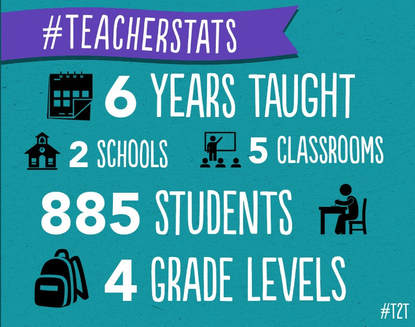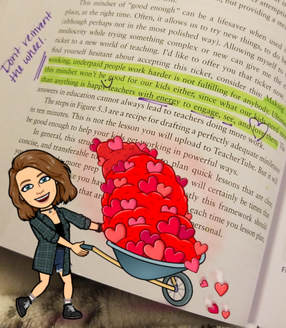|
First things first. I am in love with two Twittersphere things at the moment: #BookSnaps and #TeacherStats. Without even really knowing the full story, I jumped on both bandwagons… (Kind of like the sad, awkward kid trying to make friends). But that’s not what I promised. I promised grading hacks, which is really the dangling carrot. As I mentioned in my previous post, I have made an intentional push to get my students writing MORE in the last couple years, largely in response to AP curriculum. In order to maintain whatever sanity remains along the way, I’ve been forced to find grading solutions to manage intake as high as 95+ essays every week. In this series, I want to start with my favorite: holistic grading. I’m starting here for one big reason. Holistic grading, while my favorite grading hack, requires the biggest shift in mindset about grading and feedback. It’s not for everyone, and I get that. For me, though, it is eeeeeverything. Why I Grade HolisticallyHere’s why I love it.
So, basically, I love using holistic grading. Fortunately for me, I have holistic scoring guides created by AP which I have adapted to general writing styles. Creating holistic rubrics isn’t difficult, however; it’s the preparation to use them which can be daunting. Therefore, I wanted to walk through the process I use, noting a few of the strategies I have found helpful along the way. How I Grade HolisticallyDon't panic! I never use all of these methods adjacent, but I do hit the basic steps in the process for each new holistic rubric.
This methodology seems time consuming, and it can be – especially at the beginning of the year. However, the process becomes internalized and the preparation lessens and lessens. It is additionally helpful that the rubric does not change much from one assignment to the next, making the expectations clearer as the year progresses. That said-- Grade Holistically, Only If...... you are willing to commit to the mindset so it is done with fidelity.
Holistic grading isn’t the fix-all some people think it is. As a member of a PD committee recently, we found that teachers craved holistic rubrics, but in practice, they seemed to fall flat with students. This emphasizes the important of preparation when using holistic grading. If you frontload at the beginning of the year, as I described above, and reinforce the expectations with students, holistic grading is the grading hack you always wanted. However, that said, it is obviously a yearlong commitment to do it properly. Additionally, holistic grading is not for process work, but summative. In my world, process work (draft checks, body paragraphs, etc) is meant for feedback, not a grade. It does no good to grade an intro paragraph holistically when you are trying to direct their specific revisions. Rather, feedback is appropriate. (In a later post in this grading hacks series, I’ll talk about how to manage that step of the process). Basically, just recognize when holistic is appropriate and when it is not. On-demand writing of any kind is great for holistic grading. Finally, the student perception of feedback from holistic grading is a challenge. Some students – most even – expect the details comments written throughout. Nonetheless, we know that pain of seeing those annotated drafts dropped in the garbage on the way out. As mentioned, I’ll talk about time saving feedback in the future, but holistic grading can only work as feedback if you have properly normed the levels of proficiency. It also requires you to foster a growth mindset with the students that move away from mastery of skills to overall improvement. Students need to understand the merits in moving from a 2 to a 4 or a 6 to an 8. In fact, I have found that holistic grading helps students recognize improvement a little more clearly (especially if you have them progress monitor!). It is the process work in between - with feedback - that is going to re-teach and re-direct. And that’s what I got. My WHY, HOW, and ONLY IFs of holistic grading. Like I said, it is more of a mindset change that needs to carry out throughout the year. But, if you do so with fidelity, it has been one of the biggest grading hacks of my experience. It makes it possible to get through 5 essays in 10 minutes, or 60 essays in just a couple hours. I'd rather spend the process work leading up to a summative take my time. After all, a summative assessment should be a student's best chance for success.
0 Comments
Leave a Reply. |
Archives
February 2024
AuthorSteph Cwikla has been a teacher since 2012, focusing on ELA curriculum. Now, she also works as an instructional coach, helping other teachers improve engagement and instruction. |
||||||



 RSS Feed
RSS Feed